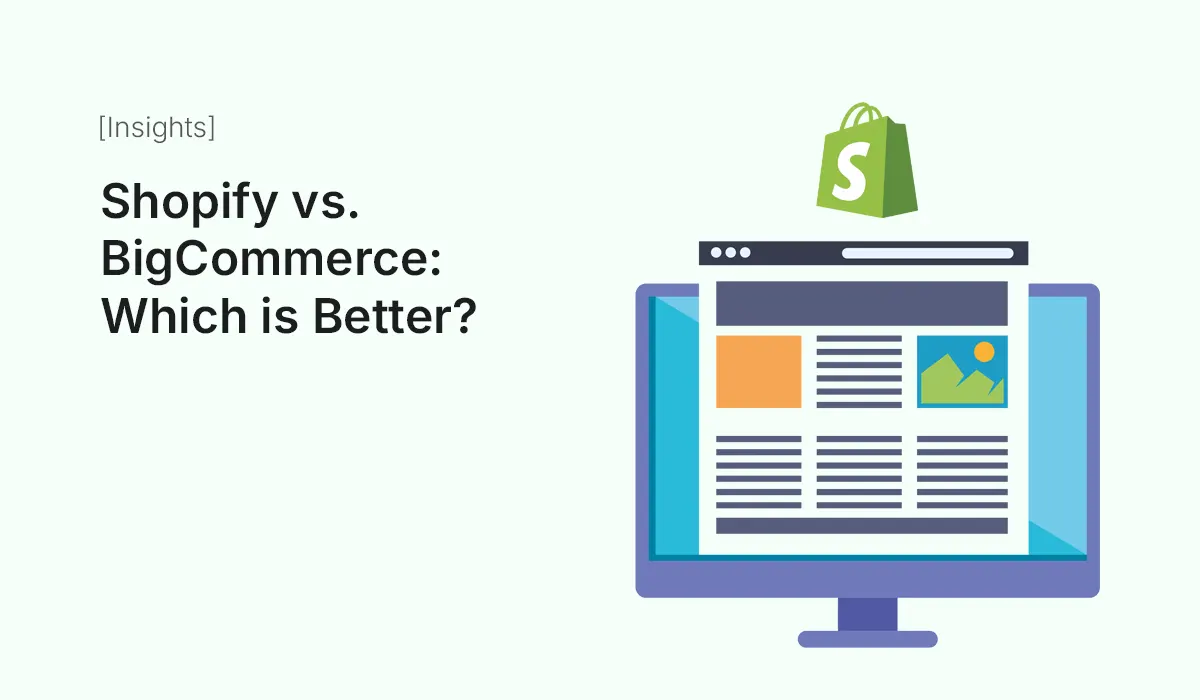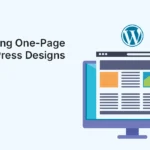Introduction
Choosing the right eCommerce platform can make a big difference in your store’s ease of setup, cost, scaling, and long-term success. Two of the top choices are Shopify and BigCommerce. Both offer strong tools, themes, payment options, and more—but they differ in what they give out of the box vs via apps, pricing details, and trade-offs. This article will help you compare them so you can pick what’s best for your store.
Overview of Shopify and BigCommerce
| Feature | Shopify | BigCommerce |
|---|---|---|
| Nature | All-in-one commerce platform with large app marketplace, strong brand visibility. | Also SaaS eCommerce, but tends to include more features natively without need for add-ons. |
| Ease of Use | Very beginner-friendly; strong theme ecosystem; intuitive admin interface. | Has more built-in features so slightly steeper learning curve. |
| Scalability | Scales well, especially with higher plans (Shopify, Advanced, Plus). | Equally built for scale; sometimes better out-of-the-box if you need advanced features earlier. |
Feature & Capability Comparison
Here are key areas to compare, what BigCommerce does better, what Shopify does better:
| Area | Where Shopify Shines | Where BigCommerce Has an Edge |
|---|---|---|
| App / Plugin Ecosystem | Huge app marketplace; nearly endless integrations; many third-party themes. If you need something special, likely there’s an app. | More features built in, so in many cases you need fewer apps. E.g. product filtering, customer groups, some advanced promos are more native. |
| Transaction Fees / Payment Gateways | If you use Shopify Payments (in supported countries), transaction fees are minimal or none; but if you use external payment gateways, Shopify charges additional fees. | BigCommerce does not charge transaction fees on any plan for using external gateways. Easier to avoid extra charges. |
| Built-in Features vs Add-ons | Many features require apps—discounts, complex filtering, special group pricing etc often come via apps. | More of those advanced features are included out-of-the-box, which can reduce reliance on apps and reduce cost/maintenance. |
| SEO & URL / Marketing Features | Good SEO tools, many apps available; clean URLs, etc; theme flexibility. | Strong built-in SEO options, more advanced URL / microdata / product filtering etc in some plans. |
| Cost & Total Cost of Ownership | Core pricing starts around US$29/month for basic plans; apps, theme extras, transaction fees can add up. | Similar base pricing tiers (Standard, Plus, Pro etc) but since more is included, often fewer add-ons needed, which may lower ongoing cost. |
| Transaction Volume / Plan Limits | Some plans impose limits (e.g. staff accounts, features, etc). Upgrading gives more capacity. | BigCommerce sometimes forces plan upgrades when you cross certain revenue thresholds; some high-volume features only come on higher plans. |
Cost Comparison in 2025
Here’s how their pricing tiers generally stack up (rounded, subject to change):
| Plan Tier | Shopify Cost | BigCommerce Cost | Key Differences |
|---|---|---|---|
| Entry / Basic | ~$29/month (for basic online store features) | ~US$29-$39/month for Standard plan | BigCommerce Standard often includes more native features; Shopify may require apps to match those. |
| Mid-Tier | ~$79/month | ~US$79/month | At this level, BigCommerce adds more segmentation, built-in advanced features; Shopify gives stronger theme / apps marketplace. |
| High / Enterprise | ~$299+, or Shopify Plus for large businesses | US$299 / Pro plans or Enterprise at higher levels | Shopify Plus gives more control and larger app ecosystem and community; BigCommerce Enterprise is strong for multi-storefronts, B2B, etc. |
Other cost considerations:
- Transaction fees if not using platform’s native payment processor (Shopify charges extra in such cases).
- Cost of apps and themes: Shopify has many good free and paid apps, but if many add-ons are needed, monthly cost can escalate. BigCommerce tends to reduce that need.
- Scalability costs and pricing bumps when hitting revenue thresholds on BigCommerce.
Pros & Cons: Which Platform Might Suit Which Business
Here are trade-offs, and suggestions based on business type or priorities.
| If You Are… | Shopify Might Be Better If… | BigCommerce Might Be Better If… |
|---|---|---|
| A beginner / small store owner who wants to get started quickly | You want simple setup, many theme options, and ready apps to extend | Might feel slightly more complex up front but you get more out-of-the-box features later |
| Focusing on minimizing ongoing costs | You are okay with using Shopify Payments or willing to pay some apps, because of big app marketplace | You want fewer external add-ons, no extra transaction fees, many built-in features |
| High-SKU / large product catalogs or B2B | Shopify can scale, especially with Plus; huge app ecosystem helps fill in gaps | BigCommerce may be more native in features such as custom pricing, large catalogs, filtering, etc. |
| Want maximum customization and theme / design flexibility | Shopify offers very large theme marketplace and many third-party developers | BigCommerce also flexible but sometimes less variety of premium themes and app extensions |
| Need features very early — e.g. complex product filters, custom customer groups, multi-currency, sub-stores, etc | Shopify will require apps; some features behind certain plan levels | BigCommerce often includes many of those features in regular or higher mid-tier plans |
Real-World Use Cases & Examples
- If you anticipate needing many additional features (e.g. advanced filters, customer group pricing, custom checkout flows), BigCommerce may save you on app costs and integrations.
- If you prioritize a fast setup, lots of themes, lots of apps, and strong marketplace / community support, Shopify often wins.
- If you’re planning global sales, want multiple payment gateway compatibility, and want to avoid extra transaction fees, BigCommerce has advantages.
- If you don’t mind apps and want to build something specific, Shopify gives more flexibility via app dev ecosystem.
Limitations and Things to Watch Out For
- Shopify’s reliance on apps: While you get great flexibility, you may spend more on apps and managing them (compatibility, speed, updates).
- Transaction fees with non-Shopify Payments: Can eat into margins.
- BigCommerce’s plan limits / revenue thresholds: If your sales grow, you might need to upgrade even if you don’t need new features.
- Learning curve: BigCommerce might require slightly more technical setup depending on how many built-in options you use.
- Theme and app availability: Shopify’s marketplace is larger; sometimes you find more niche apps/themes for Shopify.
Conclusion
So, which is better? It depends largely on your priorities. There’s no one-size-fits-all:
- If you want fast setup, huge ecosystem, design flexibility, and are okay paying for certain add-ons or app integrations, Shopify is excellent.
- If you want to reduce friction from needing many add-ons, want features built in, avoid extra transaction fees, and possibly serve larger catalogs or B2B customers earlier, BigCommerce may give you more bang for your buck.
If I had to pick in general:
For most small-to-medium stores just starting out, Shopify tends to win because of ease of use, strong community / theme/app ecosystem, and speed of setup.
For stores anticipating growth, complexity, or needing especially many built-in features (filters, custom pricing, B2B, etc.), BigCommerce often becomes very attractive.
Ready to decide between Shopify vs BigCommerce for your store? Start a free trial on both, test your key features, and choose the platform that aligns best with your business goals and budget.






